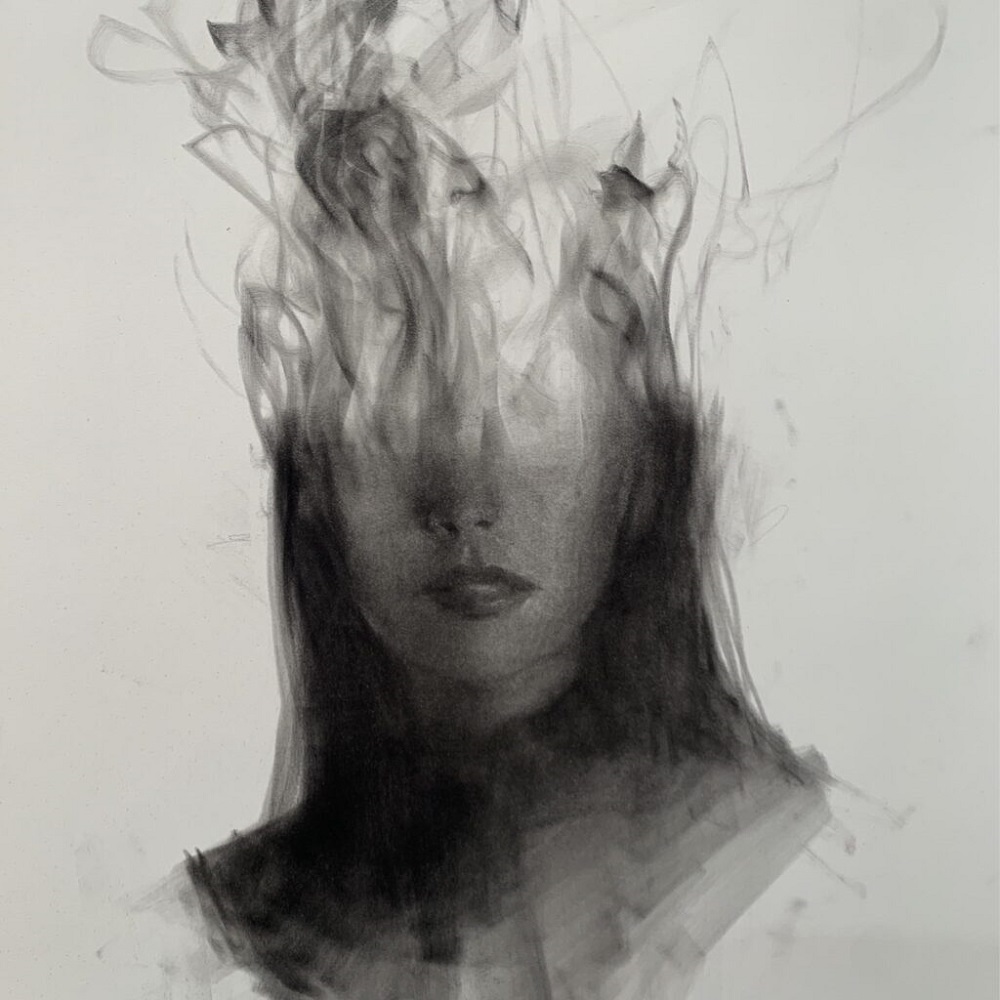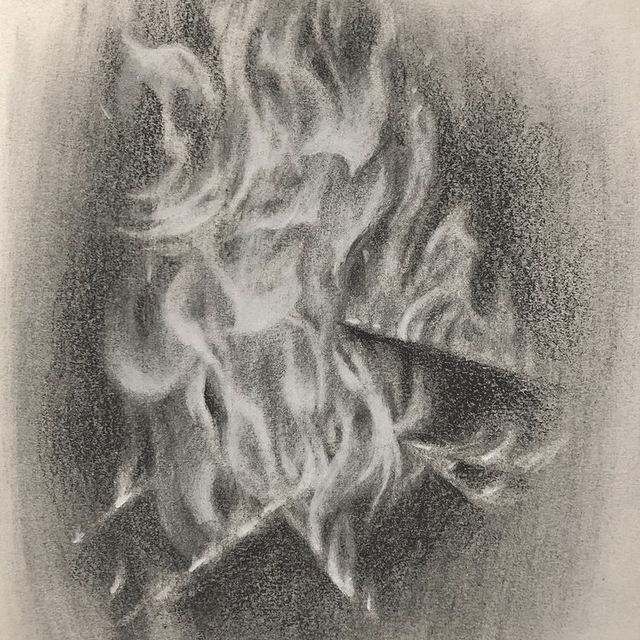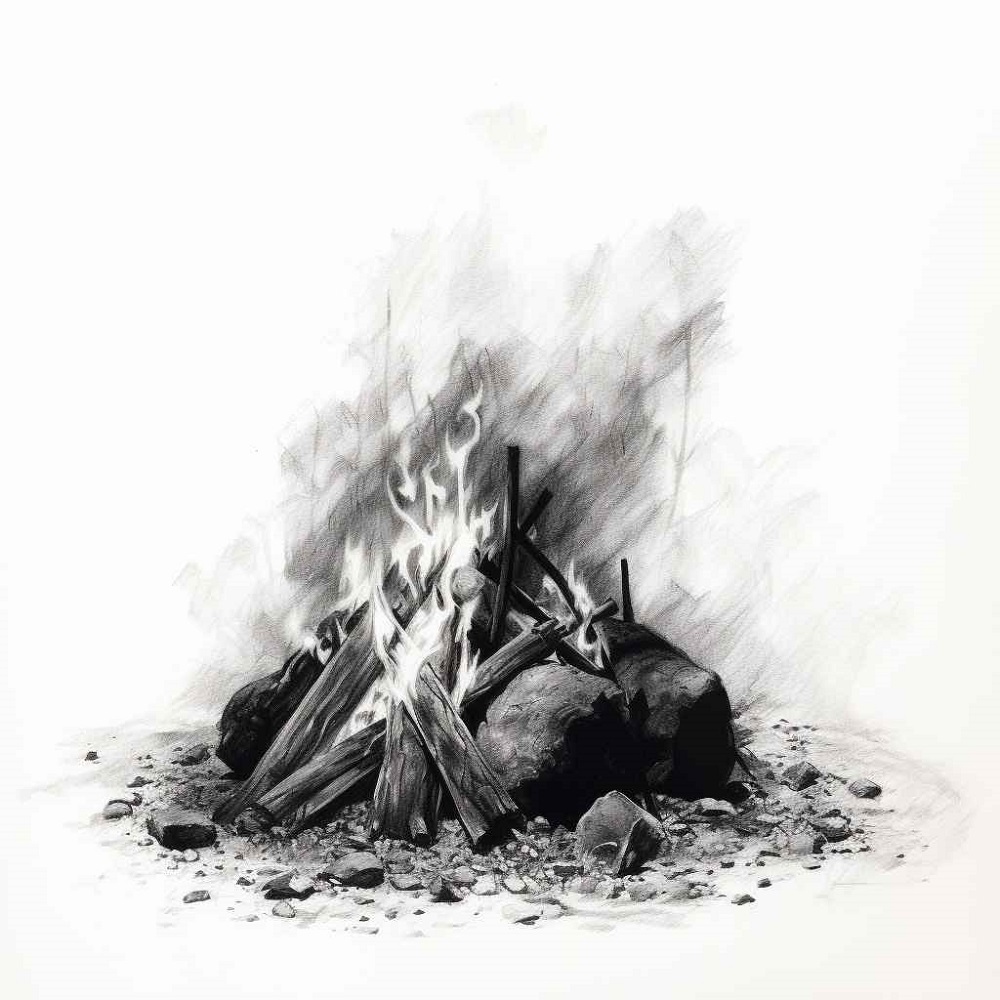Fire charcoal drawing offers an intimate and expressive way to create art, allowing artists to explore texture, depth, and shading with ease. If you’re intrigued by this medium and want to dive into the world of charcoal drawing, you’ll need to gather the right supplies to get started. This guide will provide you with essential tools and materials, along with tips on how to use them effectively, so you can unleash your creativity and develop your artistic skills.
Choosing the Right Charcoal
Types of Charcoal
The first step in your journey into charcoal drawing is selecting the appropriate charcoal. There are three main types: compressed, vine, and charcoal pencils. Each type has its unique characteristics and uses, so understanding their differences is key.
- Compressed Charcoal: This type is made by compressing charcoal powder into sticks under pressure. It provides rich, dark lines and is excellent for bold strokes. Compressed charcoal is ideal for creating deep shadows and dramatic contrast, making it a favorite among many artists.
- Vine Charcoal: Made from burning thin twigs of wood, vine charcoal is lighter and softer than compressed charcoal. It allows for a softer mark, perfect for initial sketches or blending. Artists love vine charcoal for its erasability and the ease with which it can be manipulated.
- Charcoal Pencils: These are simply charcoal encased in a wooden pencil-like casing. They combine the best aspects of both vine and compressed charcoal, offering control and convenience. Charcoal pencils work well for detailed line work and finer details in your drawings.
Selecting the Right Brands
When choosing charcoal, consider the brand, as quality can vary widely. Popular brands like General’s, Faber-Castell, and Derwent offer a range of charcoal types suitable for beginners and experienced artists alike. Read reviews or ask fellow artists for recommendations to find the charcoal that best matches your drawing style and preferences.

Paper Selection
Characteristics of Charcoal Paper
Choosing the right paper is just as crucial as selecting your charcoal. Not all paper works well with charcoal due to the medium’s unique characteristics. When shopping for paper, look for a specific type designed for charcoal drawing.
Charcoal paper typically features a textured surface that helps grip the charcoal, allowing for better shading and blending. The texture can range from fine to rough; rough textures hold more charcoal, while smoother surfaces are better for detailed work. It’s wise to experiment with different textures to see which one suits your style the best.
Sizes and Weights
Paper also comes in various sizes and weights. For practice, you might start with a pad of smaller-sized paper (like 9×12 inches), which is convenient and less expensive. When creating finished pieces, consider using larger sheets or rolls of paper, which allow for more significant expression and composition.
Keep in mind that heavy-weight paper (around 90lb or higher) is generally better for charcoal, as it can handle smudging, blending, and erasing without warping or tearing.
Essential Blending Tools
Tortillons and Stumps
To achieve a smooth finish and profound depth in your charcoal drawings, blending tools are essential. Tortillons are tightly rolled paper tools that help in blending, softening, and smoothing out your charcoal marks. These tools are handy for creating gradients and realistic textures.
Stumps are similar but made from firmer materials. They allow for more precise blending and control over your charcoal application. When you want to refine edges or create detailed shading, stumps can help achieve a more polished look in your artwork.
Erasers for Correction
In charcoal drawing, correcting mistakes can be as crucial as the initial application. A kneaded eraser is particularly effective for this medium, enabling you to lift charcoal from the paper gently. It can be shaped to fit specific areas, allowing for precise corrections and highlights.
Regular vinyl or plastic erasers also have their place; they can effectively erase more stubborn marks. Having a couple of erasers handy makes it easier to adjust your work as you see fit.

Additional Drawing Tools
Rulers and Straightedges
Although charcoal drawing is mostly about freehand techniques, having a ruler or straightedge can be invaluable for creating straight lines or precise angles, especially in more structured compositions. These tools help maintain proportion and symmetry, adding professionalism to your work.
A good-quality triangle can further enhance this capability, enabling you to construct angles with ease. Not only do these tools help in sketching initial outlines, but they can also guide the rest of your drawing process, providing the precision that freehand techniques might miss.
Fixatives for Preservation
After spending time on your masterpiece, it’s vital to protect it. A fixative spray is essential for preserving your drawing without smudging. This clear spray creates a protective layer over your completed work, helping to maintain its integrity while allowing the charcoal’s textures and tones to shine through.
Be sure to choose a fixative specifically designed for charcoal, as it won’t alter your artwork’s appearance. When applying fixative, do so in a well-ventilated area to avoid inhaling any harmful fumes.
Setting Up Your Workspace
Creating an Inspiring Environment
Your workspace significantly impacts your creativity and productivity. Set up a dedicated area where you can comfortably draw. Ensure you have adequate lighting, as good illumination can help you see details more clearly and reduce eye strain.
Consider organizing your materials within reach to maintain a clutter-free environment. Having everything at hand will streamline your drawing process, allowing you to focus more on your creative expression than on searching for supplies.
Ergonomic Considerations
Since fire creating charcoal art can involve long sitting sessions, prioritize comfort in your workspace setup. Choose an adjustable chair and a sturdy desk at an appropriate height to avoid discomfort while drawing. You might also consider using a drawing board that allows you to easily position your paper at an angle that suits your preferences.
Techniques for Charcoal Drawing
Initial Sketching
Start your fire charcoal drawing with light lines using vine charcoal. This stage is crucial for laying out your composition before committing to darker lines and shading. A gentle touch will allow you to make changes easily without damaging the paper.
Sketching lightly will help you maintain flexibility throughout the drawing process. You can gradually build up layers of charcoal and refine your sketch until you’re satisfied with the outcome.
Shading and Blending
One of the significant advantages of charcoal is its ability to create rich, deep shading. After your initial sketch, use compressed charcoal for darker areas and blending tools to achieve smooth transitions. The key is to build layers gradually; you can add depth over time instead of applying too much charcoal at once.
Try various techniques such as hatching, cross-hatching, and smudging to create texture and dimension in your drawing. Experimenting with these methods can lead to discovering your unique style and approach to charcoal art.

Expanding Your Skills
Resources for Learning
As you grow more comfortable with fire charcoal drawings, consider exploring tutorials, workshops, or online courses. Numerous resources are available, from instructional books to video tutorials. Engaging with professionals can provide insights into advanced techniques, tips for overcoming challenges, and personalized feedback on your work.
Join art communities, whether online or local, to share your drawings and receive constructive criticism. Collaboration and conversation can provide motivation and inspire new ideas.
Continuous Experimentation
Art is an evolving journey, so don’t be afraid to try new things. Push the boundaries of your charcoal techniques by experimenting with mixed media, different papers, or alternative subject matter. Exploring various styles and mediums can help you find what resonates most with you as an artist.
Remember, the beauty of charcoal is in its versatility and expressiveness. Free your imagination and let your creativity flow. The more you practice and experiment, the more you refine your skills and develop your artistic voice.
Begin Your Charcoal Journey
Starting your fire charcoal drawing journey can be both exciting and challenging. Armed with the right supplies and techniques, you can create stunning works of art filled with character and depth. Whether you’re a complete beginner or already have some experience, charcoal offers vast possibilities for expression.
Invest time in understanding your materials, practicing various techniques, and creating a conducive workspace. With patience and dedication, you can elevate your charcoal drawings to new heights. So gather your supplies, unleash your creativity, and enjoy the rewarding experience of drawing with charcoal!